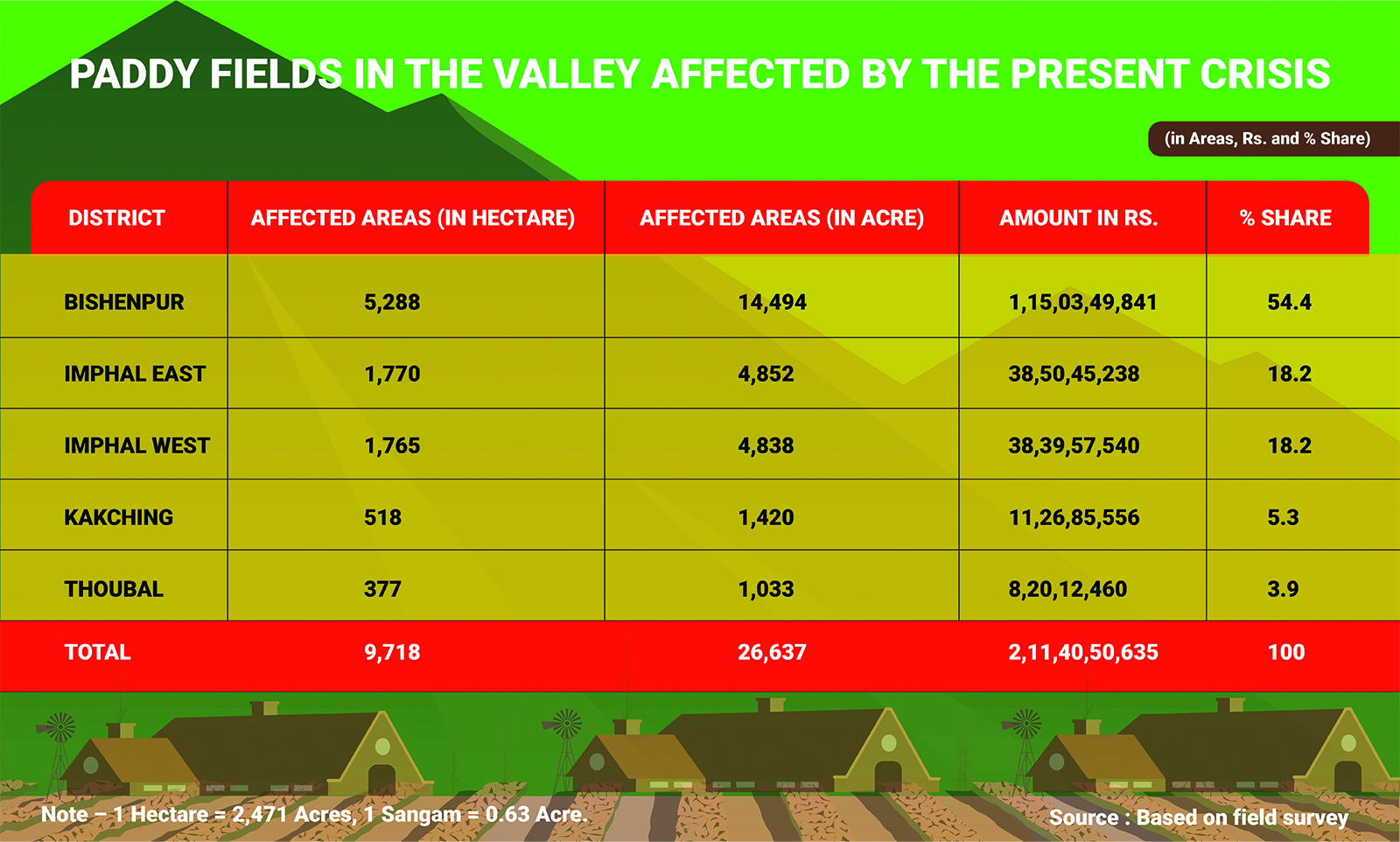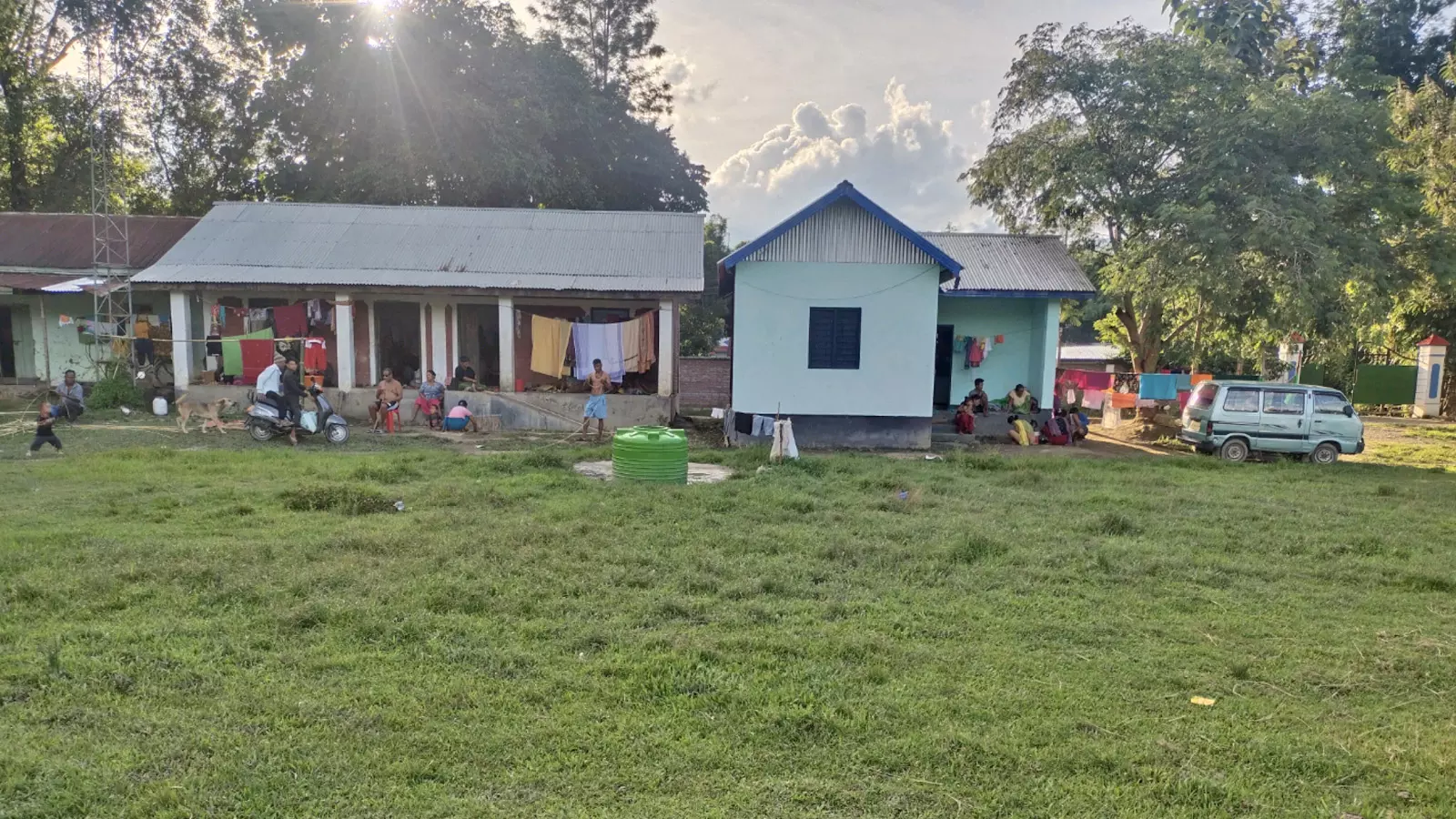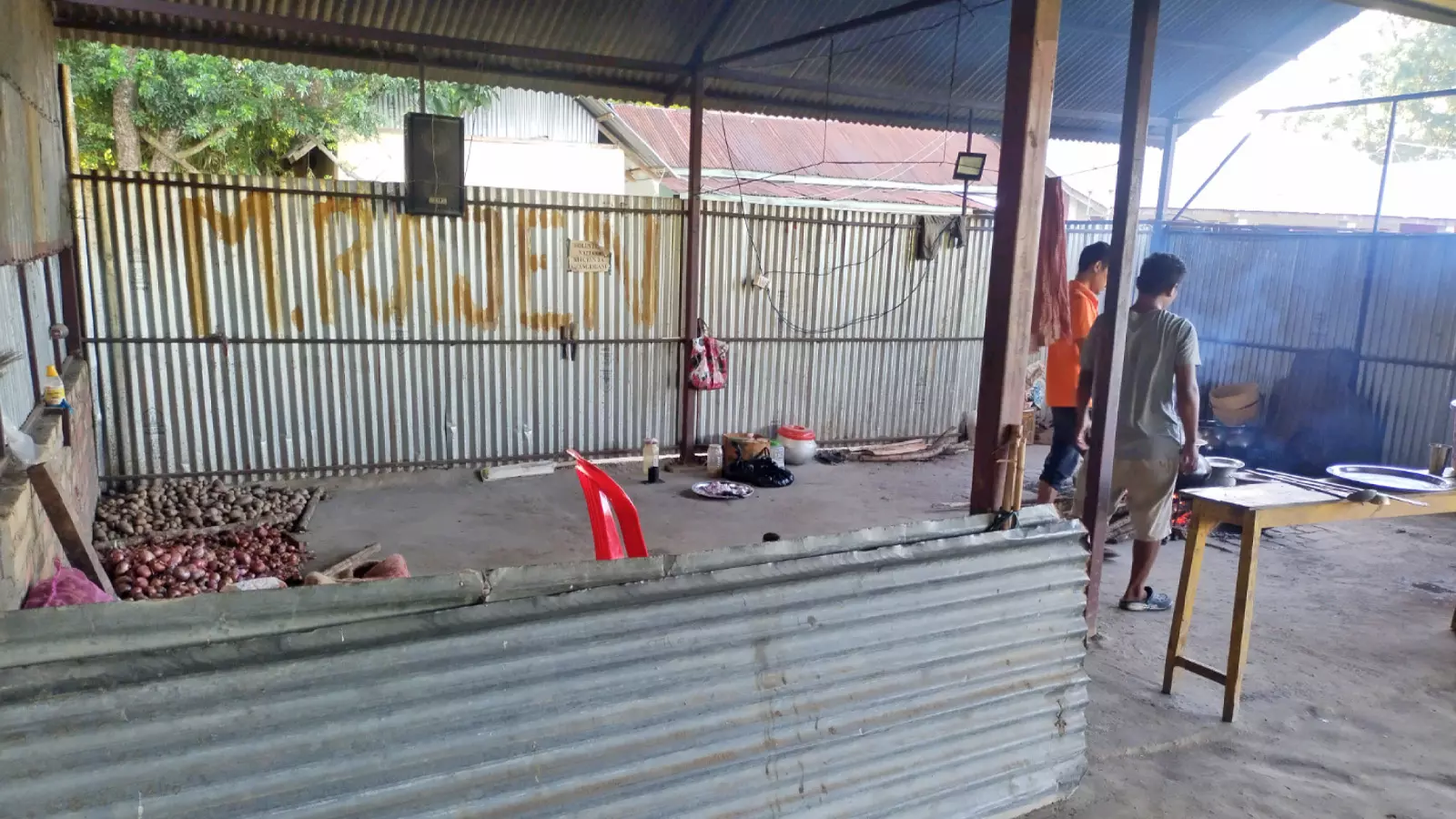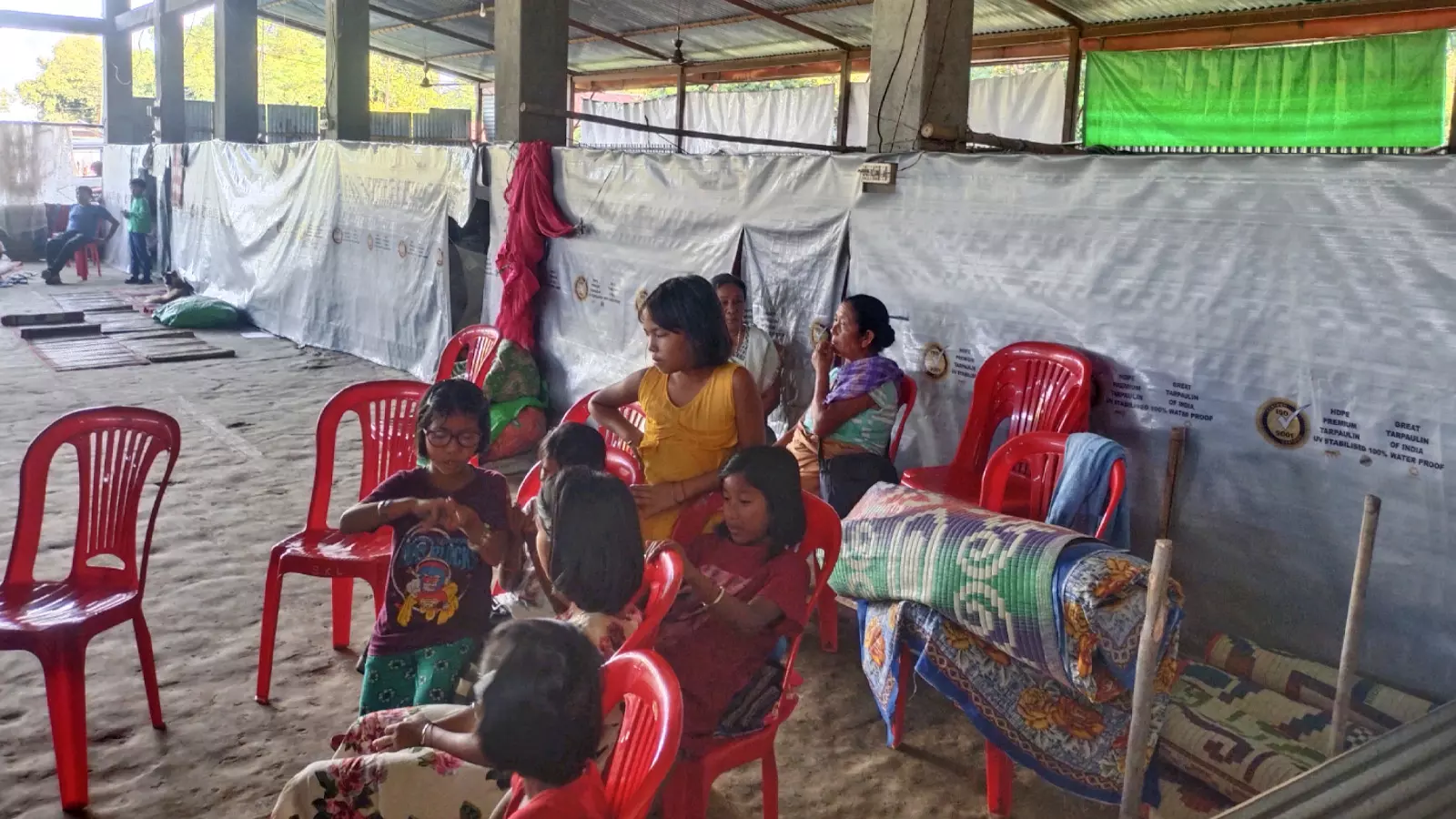
- Home
- India
- World
- Premium
- THE FEDERAL SPECIAL
- Analysis
- States
- Perspective
- Videos
- Sports
- Education
- Entertainment
- Elections
- Features
- Health
- Business
- Series
- In memoriam: Sheikh Mujibur Rahman
- Bishnoi's Men
- NEET TANGLE
- Economy Series
- Earth Day
- Kashmir’s Frozen Turbulence
- India@75
- The legend of Ramjanmabhoomi
- Liberalisation@30
- How to tame a dragon
- Celebrating biodiversity
- Farm Matters
- 50 days of solitude
- Bringing Migrants Home
- Budget 2020
- Jharkhand Votes
- The Federal Investigates
- The Federal Impact
- Vanishing Sand
- Gandhi @ 150
- Andhra Today
- Field report
- Operation Gulmarg
- Pandemic @1 Mn in India
- The Federal Year-End
- The Zero Year
- Science
- Brand studio
- Newsletter
- Elections 2024
- Events
Rice, ginger, green chillies… Manipur violence hits agriculture as farmers abandon fields

As one drives from Imphal valley towards the hills passing behind urban settlements, a breathtaking view of the vast expanse of plains with emerald hills in the horizon props up. This lacustrine plain of Imphal basin near the foothills of mountain ranges is the cereal bowl of Manipur.Out of the state’s total geographical area of 22.327 square kilometres, only 7.41 per cent is used...
As one drives from Imphal valley towards the hills passing behind urban settlements, a breathtaking view of the vast expanse of plains with emerald hills in the horizon props up. This lacustrine plain of Imphal basin near the foothills of mountain ranges is the cereal bowl of Manipur.
Out of the state’s total geographical area of 22.327 square kilometres, only 7.41 per cent is used for cultivation. Of this total cultivated area, 52 per cent is confined to the valley, mostly in the foothill region. Crop cutting surveys, according to the state’s vision document 2030, reveal yields in the valley region at 4,000 kg of rice per hectare is much higher compared to about 900 kg per hectare in the hills. The productivity of this fertile plain has thus been essential for the food security of the state.

Like everything else in the state, however, rice productivity in particular and agriculture in general, too has become a victim of the spell of violence that began on May 3 and has since claimed hundreds of lives and property worth crores.
The violence has ensured that the fertile track of Impahal basin has largely remained bereft of any cultivation even as the Kharif season (June to October) draws to an end because the region has turned into a war zone since the state plunged into a vortex of mindless killing.

People in a relief camp in Manipur. Violence has made it impossible for people to lead normal lives. Photos: James Khangenbam
According to a field survey report prepared by the state-level farmers’ union, Loumee Sinmee Apun Lup (LOUSAL), 9,718 hectares of paddy fields in five valley districts of Manipur have been impacted by the conflict. On the other hand, the agriculture department estimated 5,127.08 hectares as “severely affected” agricultural areas.
“The data variation in the two surveys can be attributed to the methodology used to estimate the loss,” a senior agriculture department official told The Federal.
The district-wise affected areas as per the department’s estimate are as follows: 539 hectares in Imphal West, 633 hectares in Imphal East, 37 hectares in Jiribam, 597.83 in Senapati, 581 hectares in Thoubal, 273.35 hectares in Chandel, 2191 hectares in Bishnupur and 275 hectares in Churachandpur.
The agriculture department’s data shows the farm sectors both in the conflict zones of the valley and the hills are hit equally by the violence.
The agricultural sector in Manipur has suffered a setback at a time when increased investment by the central government had raised hopes for organic farming. Since 2016, the Centre has pumped around Rs 200 crore in organic farming in the state, which mostly takes place in the hills. The production and export of organic agricultural products such as pineapple, ginger and green chillies were quite encouraging.
The state could export Rs 20 crore worth of ginger alone before the pandemic, according to the state agriculture department’s data. “This year, however, there is hardly any production or export from the violence-hit Kuki-Zo areas in the hills as the farmers are mostly busy guarding their villages,” an official in Churachandpur district said, speaking on the condition of anonymity.
There are similar stories of farm distress pouring in from the valley as well.
This despite the state government deploying security forces exclusively to give protection to farmers working in their fields after the onslaught of monsoon that heralds the Kharif season.
“Over 2,000 security personnel were deployed for protection of farmers in the vulnerable areas,” said Inspector General of Police (Operation) IK Muivah.
For Imphal West district, 822 personnel were deployed; 298 personnel for Imphal East; 236 personnel for Bishnupur; 147 personnel for Thoubal; 204 personnel for Kakching; 200 personnel for Kangpokpi and 300 personnel for Churachandpur.
Gun-wielding security personnel patrolling paddy fields, keeping a vigil on them from the nearby bunkers, was a common sight during this monsoon cropping season. These measures, however, proved inadequate as has been evident from the LOUSAL’s recent field survey report submitted to the state’s agriculture department. Despite the vigil, the bloodshed could not be controlled.

9,718 hectares of paddy fields in five valley districts of Manipur have been impacted by the conflict.
Yumnam Ranjan from Phubala Mamang Leikai in Bishnupur district sustained bullet injuries while he was tilling his paddy field. Another farmer Salam Jotin met a similar fate while he was working at his paddy field at Naranseina Maning Loubuk also in Bishnupur district.
They were shot from a long-range, ostensibly using sniper guns, perhaps taking position from a hill range falling under Churachandpur. These firings led farmers to abandon the fields in a bid to save their lives.
About two-and-half-kilometres of paddy field from Phubala to Naransena under Bishnupur district is considered to be very fertile with abundant water supply from an irrigation canal.
The Sikh regiment was posted in the area to guard the paddy fields and the water source.
“The soldiers would blow whistles even if we went to the irrigation channel as the area was marked as a red zone by security forces,” said a farmer from Phubla.
Under the strict security vigil, the farming activities were going on in full swing until suspected Kuki miscreants opened fire allegedly from the hill tops at farmers who were working in paddy fields in August.
The two wounded farmers survived following medical intervention, but the armed attack fanned the fear among the farmers. Farmers whose paddy field fell within the range of sniper or other long-range arm attacks abandoned their fields. The cultivation works had to be stopped in the middle.
Phuritshabam Oken, a farmer from Khurkhul, Imphal West district, said 1,800 acres of paddy field in his village remained uncultivable. His own 4.5 acres of paddy field too was not tilted this year, leaving him totally on the mercy of government’s assistance for sustenance of his family.
The village irrigation system for cultivation is mostly fed by natural streams and small rivulets running along the foothills. “Due to heavy gunfire from the hills the farmers could neither access their paddy fields, nor could man the irrigation system,” the farmer said.
Just before the start of monsoon season in June, villagers used to channelled the flow of natural spring towards the paddy fields by making small mud dams and earthen canals.
This year, the villagers did not dare venture near the foothills to erect the temporary irrigation system due to the turmoil that began in May, the farmer added.
In the absence of irrigation facilities, rain-fed cultivation was carried out only in some paddy fields in the village that are beyond the range of the gunfire.
LOUSAL president Mutum Churamani said as per their estimate grains worth Rs 211 crore would be lost in the valley alone as 9,718 hectares of paddy field in the Imphal basin remained uncultivable.
The value is determined as per government rate with 1 kg of grain costing Rs 35 when the government purchases from the farmers.
The farmer’s union drew the attention of the central government towards the plight of the farmers. The state government has also moved the Centre for compensation.
The Agriculture Commissioner RK Dinesh Singh stated that the estimated loss in terms of money for the 5,127.08 hectares was projected to be Rs 38.06 crore based on the average crop yield of the affected districts in the last three years.

Manipur's food security could stand compromised if farmers don't return to the field, which is unlikely till violence ceases.
He said the state agriculture department has moved a proposal to the Ministry of Home Affairs for that a package of Rs 38.06 crore as crop compensation be disbursed for the farmers.
“The proposal has been accepted by the ministry. The priority now is to speed up the process of releasing the relief package to the affected farmers as soon as possible, at least by the month of November,” the commissioner added.
The farmers who have already submitted their documents are expected to get the compensation this month, the LOUSAL president said.
That is the only hope the farmers in the granary of Manipur are clinging to.
